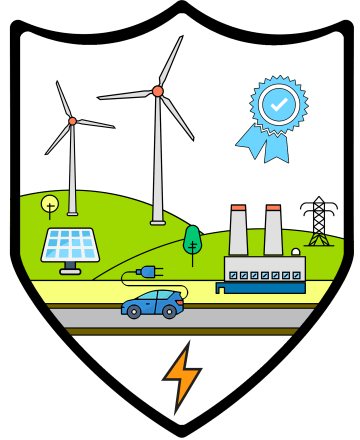IEC 60870-5-104 dataset
The evolution of the Industrial Internet of Things (IIoT) introduces several benefits, such as real-time monitoring, pervasive control and self-healing. However, despite the valuable services, security and privacy issues still remain given the presence of legacy and insecure communication protocols like IEC 60870-5-104. IEC 60870-5-104 is an industrial protocol widely applied in critical infrastructures, such as the smart electrical grid and industrial healthcare systems. The IEC 60870-5-104 Intrusion Detection Dataset was implemented in the context of the research paper entitled “Modeling, Detecting, and Mitigating Threats Against Industrial Healthcare Systems: A Combined Software Defined Networking and Reinforcement Learning Approach” [1], in the context of two H2020 projects: ELECTRON: rEsilient and seLf-healed EleCTRical pOwer Nanogrid (101021936) and SDN-microSENSE: SDN – microgrid reSilient Electrical eNergy SystEm (833955). This dataset includes labelled Transmission Control Protocol (TCP)/Internet Protocol (IP) network flow statistics (Common-Separated Values (CSV) format) and IEC 60870-5-104 flow statistics (CSV format) related to twelve IEC 60870-5-104 cyberattacks. In particular, the cyberattacks are related to unauthorised commands and Denial of Service (DoS) activities against IEC 60870-5-104. Moreover, the relevant Packet Capture (PCAP) files are available. The dataset can be utilised for Artificial Intelligence (AI)-based Intrusion Detection Systems (IDS), taking full advantage of Machine Learning (ML) and Deep Learning (DL).
Download from: Zenodo, IEEE DataPort
DNP3 Intrusion Detection Dataset
In the digital era of the Industrial Internet of Things (IIoT), the conventional Critical Infrastructures (CIs) are transformed into smart environments with multiple benefits, such as pervasive control, self-monitoring and self-healing. However, this evolution is characterised by several cyberthreats due to the necessary presence of insecure technologies. DNP3 is an industrial communication protocol which is widely adopted in the CIs of the US. In particular, DNP3 allows the remote communication between Industrial Control Systems (ICS) and Supervisory Control and Data Acquisition (SCADA). It can support various topologies, such as Master-Slave, Multi-Drop, Hierarchical and Multiple-Server. Initially, the architectural model of DNP3 consists of three layers: (a) Application Layer, (b) Transport Layer and (c) Data Link Layer. However, DNP3 can be now incorporated into the Transmission Control Protocol/Internet Protocol (TCP/IP) stack as an application-layer protocol. However, similarly to other industrial protocols (e.g., Modbus and IEC 60870-5-104), DNP3 is characterised by severe security issues since it does not include any authentication or authorisation mechanisms. This dataset contains labelled Transmission Control Protocol (TCP) / Internet Protocol (IP) network flow statistics (Common-Separated Values – CSV format) and DNP3 flow statistics (CSV format) related to 9 DNP3 cyberattacks. These cyberattacks are focused on DNP3 unauthorised commands and Denial of Service (DoS). The network traffic data are provided through Packet Capture (PCAP) files. Consequently, this dataset can be used to implement Artificial Intelligence (AI)-powered Intrusion Detection and Prevention (IDPS) systems that rely on Machine Learning (ML) and Deep Learning (DL) techniques.
Download from: IEEE DataPort
Datasets of Man-in-the-middle Attacks Targeting Modbus TCP/IP and MMS protocols in the Smart Grid
The sustainable development of smart grids requires the massive deployment of renewable energy, in a highly distributed manner, introducing new challenges for the system operation. Therefore, the integration of information and communication technologies in sites with Distributed Energy Resources (DERs) is needed to monitor and control the DERs operation. In this scheme, a local controller is installed at each DER site to interact with the centralized applications at the grid level and the power equipment at the site level. This local controller uses client–server protocols (e.g., Modbus TCP/IP and IEC 61850 Manufacturing Message Specification (MMS)) to communicate with different power equipment in the Private Area Network (PAN) of the site. Such protocols often lack information confidentiality and integrity mechanisms. As a result, the smart grids become vulnerable to cyber-attacks.
This repository contains datasets created to evaluate the detection and classification of man-in-the-middle attacks, operating in eavesdropping mode, targeting MMS and Modbus TCP/IP protocols in the PAN of the smart grid. Five Flow-based features were used to create these datasets.
Download the datasets: Zenodo
